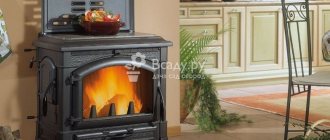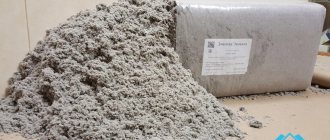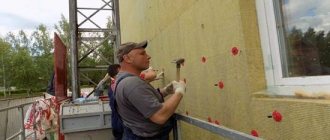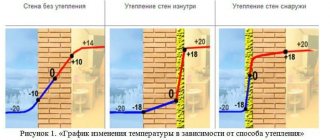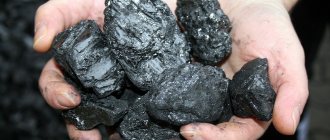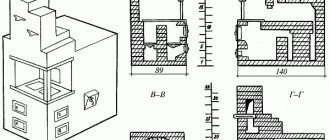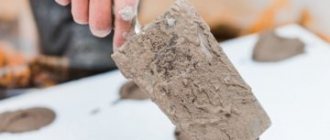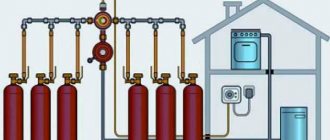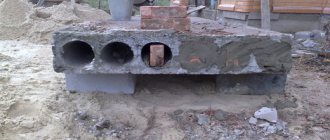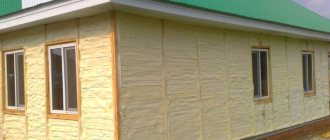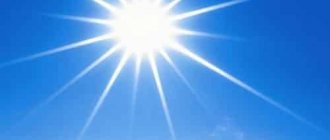Insulation of the dacha
The design of a country house is usually intended to be used during the warm season. The main task is protection from precipitation, wind and dust.
During the cold season, it becomes impossible to live in a country house; it is not able to sufficiently provide a comfortable temperature. You have to constantly heat the stove or boiler, keep electric heaters on, which creates increased consumption of energy, fuel and, accordingly, money.
Let's look at how to insulate a country house for winter living and solve the problem with your own hands.
Why insulate?
Insulating a country house for year-round use automatically turns it into a full-fledged home. The fashion for country houses has been around for quite some time, and insulating a dacha makes it possible to acquire such a home relatively inexpensively and easily. The possibility of year-round living outside the city limits, in the fresh air, is attractive to most owners of country houses.
In addition to considerations of economy, insulating a country house with your own hands has another, more important reason. When people live permanently, the house develops its own atmosphere, saturated with water vapor. They appear due to cooking, using the bathroom, toilet. But the main amount of steam appears due to people's breathing. The steam that comes out of your mouth in the cold is also released when you breathe in warm rooms, it’s just not visible. In the internal atmosphere of a house, steam is under a certain pressure, which is called partial pressure. Normally, this moisture is gradually pressed through the walls and removed outside, evaporating from the outer surface of the walls.
If the structure of the house is not designed for living in winter, the surfaces of the walls are not able to retain heat. They are constantly cold, which causes steam to condense on them. The walls get wet, become saturated with water, freeze on the outside and begin to collapse. Metal elements begin to rust and fail.
Insulating the dacha for winter living will help to avoid this, which consists of installing a heat insulator on the surface of the external walls, ceilings, floor and (if required) roof.
When can you insulate a house from the inside?
First of all, insulation from the inside is quite possible when you do not live in a country house all the time and do not heat it all winter. Then, internal insulation is more preferable: such a house will warm up faster.
Further, you can insulate from the inside if it is possible to leave a ventilated gap between the wall and the thermal insulation layer. But such a gap significantly reduces the internal volume of the building. Not everyone can afford it.
Finally, there are situations when an insulated room is combined into one with other rooms of the house. For example, you have a dining room and a summer terrace. You insulate the terrace and combine it with the dining room. In this case, excess moisture accumulation will not occur.
If you do not want to insulate, but to “warm” the house, then you can use warm plaster. It differs from the usual one in that it contains some kind of porous material - either polystyrene foam beads, expanded vermiculite or cellulose fibers.
As an insulation material, such plaster is two times “weaker” than mineral wool. The maximum thickness of the coating is 5 cm (mineral wool is usually laid in layers about 10 cm thick), otherwise the plaster will fall off.
Materials for thermal insulation
To insulate the outside of a country house with your own hands, various materials can be used:
- hard (slab). These include polystyrene foam, penoplex, basalt mineral wool, etc.
- roll . In most cases, these are various types of mineral wool, of which there are several dozen.
- sprayed _ Polyurethane foam, ecowool
- bulk . Expanded clay, vermiculite, sawdust, polystyrene foam granules, etc.
The main indicator characterizing a heat insulator is vapor permeability . Exist:
- permeable materials - mineral wool, all loose types, ecowool, etc.
- impermeable types - polystyrene foam, penoplex, polyurethane foam, penofol and other synthetic types of insulators
In addition, important indicators for heat insulators are:
- heat permeability The lower it is, the better the material is able to retain thermal energy.
- ability to burn . Most heat insulators either do not burn at all or are subject to appropriate procedures during manufacture. At the same time, the possibility of combustion may remain. For example, polystyrene foam does not support combustion , since its granules are filled with carbon dioxide. At the same time, a puddle of molten polystyrene burns quite well
- the ability to hold its shape and not change its linear dimensions over time. If the insulator changes size or shape after several years of operation, so-called problems occur. cold bridges that contribute to wet walls and corrosion of metal parts
- high temperature resistance
- resistance to moisture , hygroscopicity. In this regard, mineral wool, which requires the installation of protective films, lags noticeably behind.
- biologically neutral . The insulator must not rot, support the growth of mold or mildew, or support insects or rodents.
The most common are mineral wool and polystyrene foam. This is due to high performance, relatively low cost and availability. Recently, materials made from polyethylene foam have been actively developed, which are absolutely resistant to moisture and biological manifestations.
The choice is usually determined by price and the user’s general ideas about a particular material, its qualities and properties. For those wishing to insulate a country house for winter living, price is of considerable importance , which often predetermines the choice of material to the detriment of the quality of work.
When deciding how and with what material to insulate a country house, you need to take into account the specifics of the operation of a particular insulator and have an idea of the physical processes occurring in the structures of the house.
What criteria should you use to choose materials?
In order for the insulation of walls inside the house to meet modern quality and safety requirements, it is important to know which materials are best suited for this. The choice of thermal insulation on the market is huge, but there are several key points on which the final result depends.
- Thermal conductivity. The lower it is for the material, the higher the protection against cold. Insulation with low thermal conductivity maintains a comfortable indoor microclimate and does not allow outside temperatures to affect it. In winter it keeps the cold out, and in summer it prevents the air from heating up.
Vapor permeability. A critically important indicator for the thermal insulation of walls inside the house. The insulation must have a higher vapor permeability index than the material from which the wall is made. Then the steam will escape through the wall structures to the outside without forming condensation and mold. In this matter, you can rely on quartz-based mineral wool insulation.- Form stability and elasticity. Insulation made from an elastic and plastic material will better fill the wall space, fitting tightly to all structural elements. This will reduce the likelihood of the formation of cracks and cold bridges through which the main heat loss occurs. Today, insulation based on ISOVER quartz has such properties.
- Weight. Installing lightweight insulation to the wall does not require additional, often expensive, fasteners. When installing it, the participation of construction specialists is not necessary. Installing lightweight insulation is faster, easier and can be done on your own.
- Safety of insulation for life and health. First of all, in case of fire. Thermal insulation should have a low flammability index or, ideally, be non-flammable. The same applies to the toxicity of the insulation - it should not release harmful elements when heated. Pay attention to the composition of mineral wool, they are made from natural components: stone wool from rocks, quartz wool from quartz.
- Durability of insulation. Even building materials have an expiration date. After its expiration, the insulation may lose its properties, sag, and crumble. It will need a major overhaul. The later you have to do it, the better, of course. For example, in the conclusion of the Research Institute of Building Physics it is stated that ISOVER materials retain their performance characteristics for at least 50 years in the climatic conditions of Russia, subject to proper installation technology.
- Price. It depends on the combination of the listed points. But to ensure that the final cost of materials does not exceed your initial budget, it is important to correctly calculate the amount of material needed and choose insulation that is consumed economically, without losses during the installation process. Pay special attention to the cost of 1 m2 and 1 m3 of insulation per package, because often packs of the same size contain completely different amounts of insulation.
How best to insulate
There are two ways:
- insulation of a country house from the inside
- insulation of a country house from the outside
External insulation is considered the most effective and preferable option. It consists of installing a heat insulator on the outside of the walls and has many advantages:
- The inner surface of the walls is kept intact , which allows you to finish it in any way, install hanging furniture or household appliances
- all conditions are maintained for the unhindered release of water vapor , the durability and safety of wall materials and structures is ensured
- walls are included in the thermal contour of the building, which contributes to more efficient operation
The disadvantages of external insulation include:
- work cannot be carried out in frost , rain or darkness
- not all types of insulation are suitable for outdoor installation
Insulation from the inside involves installing heat insulators on the inside. The room becomes as if enclosed in a cocoon of insulating material installed on all external walls. The disadvantages of this method are:
- the escape of steam through the walls becomes more difficult or even
- the surface of the walls is covered with insulation, requiring the installation of protective sheathing or another layer
- installation of hanging objects on the walls is excluded
- the volume of rooms is reduced
- external walls are excluded from the thermal contour , remaining only mechanical fences
The advantages include:
- ability to carry out work at any time or in any weather
- there is free access to any surfaces
The main difference between these methods is the steam output mode. With external insulation, it passes through the wall, enters the insulation, from where it is removed outside. It is necessary to use a vapor-permeable insulator, the most successful option of which is mineral wool. With internal insulation, steam escape becomes almost impossible. If an impermeable insulator is used, cutoff occurs. If mineral wool is installed, then the steam passing through it ends up in front of the wall. Its permeability is lower than that of the insulator, so steam accumulates in the thickness of the insulation, the material becomes wet and loses its working qualities.
Vapor permeability rule
There is a rule according to which the vapor permeability of materials should increase in the direction from inside to outside. According to him, installing an impermeable insulator on the outside will “lock” the vapors inside the wall, causing it to become wet and begin to deteriorate.
At the same time, installing permeable material on the inside will create conditions for vapor absorption by the insulator, but will prevent passage through the wall. Guided by this rule, you can avoid common mistakes when choosing and installing heat insulators.
When choosing an installation method, you should definitely prefer the outdoor option. However, sometimes you have to choose internal insulation if there is no possibility or access to the surface of the walls. For example, you cannot disturb the architecture of the house, or the walls are located too close to the neighboring building, etc. When choosing internal insulation , you should immediately take care of creating a high-quality ventilation system . The removal of internal air will remove steam, which will eliminate the problem of excessive air humidity.
How to avoid mistakes when insulating an old house
- Mineral wool insulation is covered with polyethylene on both sides. As a result, condensed moisture begins to accumulate in the insulation, and its heat-protective properties decrease.
- Mineral wool can sag under its own weight. Therefore, after 2.5–3 meters it is necessary to make additional height jumpers.
- If you choose ecowool as insulation, do not forget that after 1-2 years it will become compacted and will need to be inflated.
- When using facade slabs, please note: they must be intact, without breaks, without breaks. Otherwise, “cold bridges” will form. By the way, it is also better to use mineral wool in whole sheets. But the “shelter” (polyester insulation) can be assembled from pieces.
Insulation technology
Installation methods for different materials have their own characteristics, but the general procedure remains the same. In addition to vapor permeability, it is necessary to take into account the material of the walls and ceilings in order to select the most suitable thermal insulator. In addition, insulating the walls of a country house will not completely solve the problem.
It will also be necessary to insulate the floor in the dacha from below or above, as well as insulate the ceiling and, if necessary, the roof. Typically, an insulator is installed on the roof in order to make the attic a full-fledged living space.
All work is carried out after appropriate preparation, which consists of removing hanging elements, brackets and other foreign parts from the surfaces. Contaminants are cleaned, crumbling or peeling areas are completely removed. The old coating or layer of paint is removed, if possible.
Gaps or cracks are sealed with putty or solid plaster. After this, the surface is covered with a double layer of deep penetration primer, after which you can proceed to the direct installation of the insulation.
Insulation of floors on the ground
Do-it-yourself floor insulation in a country house is done in accordance with the material or design of the floor slab. Country houses are usually built with floors laid at a low height above ground level or, as they say, on the ground. The proximity to the soil creates high humidity at the lower level of the house; the floor surface is constantly cold, which contributes to moisture condensation.
When insulating the floor in a dacha with your own hands on the ground, you must sequentially perform the following steps:
- remove boardwalk and joists
- level the base soil, compact it
- pour a layer of sand about 20 cm (thickness depends on the level of the floor, existing or desired)
- pour a layer of crushed stone, compact it well, add 305 cm of sand and also compact it tightly
- lay geotextiles and a layer of vapor barrier film on top of it
- lay a layer of insulation. Optimally - extruded polystyrene foam (penoplex), but also a good option is insulating the floor in the country house with expanded clay. It is poured in a layer of 20 cm
- pour a layer of screed 5 cm thick or more, depending on the desired floor level
After the screed has dried, either the floor covering is laid or a heated floor is installed.
Ceiling above the basement and attic
Insulation of the floor in a country house located above an unheated basement is best done from below, from the subfloor side.
A layer of vapor-permeable insulation (mineral wool) is installed on the surface of the prepared floor slab. Since the insulator will need to be protected from moisture , you will first need to install lathing with a thickness of bars no less than the thickness of the heat insulator. The sheathing pitch (the distance between adjacent planks) corresponds to the width of the insulation.
The gaps are tightly filled with insulator , all cracks are filled with polyurethane foam. Then a layer of vapor-waterproofing membrane is installed with the exit down (to the basement), after which you can begin installing the sheathing.
It is optimal to insulate the ceiling of a country house from the outside, from the attic.
The best way is to install high sheathing, fill the resulting cells with expanded clay , and lay plank flooring that allows you to move freely around the attic. It's inexpensive and fast. Alternatively, you can lay a layer of mineral wool.
The use of polystyrene foam or penoplex is allowed only if the attic is residential and heated. Otherwise, the ceiling will get wet and rot.
Wall insulation
There are two ways to insulate the walls at your dacha yourself - from the inside or the outside. We have already examined the advantages and disadvantages of these methods; now we will determine the procedure.
Preparation
Work on insulating the facade of a dacha from the outside begins with preparation - cleaning the walls of all foreign elements, removing cladding or old coating, crumbling or peeling areas. Detected cracks or potholes must be puttied or plastered; the surface is primed with a double layer of primer (deep penetration primer).
Lathing
After this, you need to install the sheathing. First, the outermost vertical strips are installed, aligned vertically and by distance from the wall surface. Then control cords are stretched between them, along which the remaining strips are installed in increments equal to the size of the insulation.
Installation of insulation
Slabs or cut pieces of insulation (mineral wool) are inserted between the sheathing strips. A layer of vapor-waterproofing membrane is installed on top of the insulator with moisture escaping to the outside (you must carefully monitor which side the film is unfolded).
Then horizontal strips for the lining are installed or siding is installed.
Internal option
Insulating a country house from the inside with your own hands is somewhat easier. Heat insulating boards (foam plastic or penoplex) are glued onto the prepared surface of the external wall . As an adhesive composition, you can use a mixture for laying ceramic tiles. The insulator is glued and additionally fixed with special dowels with a wide plastic washer.
After installing the insulation, a reinforcing mesh is attached to its surface with brackets and a layer of plaster is applied.
Mansard roof
If you need to create a full-fledged living space from the attic, you need to insulate the roof. The only available option is to insulate the attic roof from the inside. To do this, you need to install a heat insulator on the lathing layer that supports the roof covering.
A sheathing is installed, between the slats of which heat insulation mats are inserted. It is recommended to use impermeable types of material. All cracks are filled with polyurethane foam. After installing the insulator, sheathing made of clapboard, OSB, chipboard or plywood is installed on the ribs of the sheathing. The choice depends on the type of interior decoration of the attic, since sheet materials allow for more finishing options than lining.
Parameters when choosing a material
Before choosing one or another insulation material, you need to pay attention to the following parameters:
- Thermal conductivity level. The best option is a low level of thermal conductivity. Therefore, with a low thermal conductivity, the optimal temperature inside the room is maintained.
- Level of resistance to low temperatures. If the country house is not heated during the winter season, the temperature in it can drop below zero. This can lead to deformation of many types of insulation.
- Simplicity in the installation process. Owners of summer cottages usually want to arrange it themselves. Therefore, the heat insulator should be installed with your own hands without any problems.
- Price. Of course, quality is important, but still few people spend a lot of money on insulating a house for temporary residence.
These factors are fundamental when choosing insulation material.
Projects
Frame and panel construction of country houses, including dachas, is in full swing today, so we will focus more on this high-speed construction option. The frame house has more sustainable performance characteristics
Let's see what makes frame construction so popular and list its main advantages.
When building a frame-panel house, you can do without a buried foundation - just install a pile or columnar one
The base will hold tightly and will not lose its original properties for a long time. For an economy-class frame house, it is important to choose your own insulation option in order to feel comfortable in it already during the off-season. You can build a frame-panel house with your own hands - just order a standard project and purchase materials. It is worth considering that in this case we are talking about a wooden structure, where all elements are made of wood and meet all environmental standards. In addition, the house will fit perfectly into any landscape on the site. A country house can be built with all the attributes of a quiet country life: with a veranda, an attic (or it can be small Finnish houses).
The frame-panel construction option is ideally suited for the construction of a modern dacha of any layout (for example, a Finnish house). But there are other options. For example, a house made of timber. The construction of such a structure usually takes up to several months. For another six months the house will shrink. But the finished building does not require exterior finishing.
For masonry buildings, brick, aerated concrete and cinder blocks are usually used. It becomes clear how labor-intensive the process of constructing such a dacha will be. This will require a strong foundation; there are no prefabricated structures or elements. The walls of a permanent house are erected in rows. But in the future you can be proud of such a durable and reliable design - this option is good to use for year-round use.
In what cases it is impossible to carry out insulation on the outside of walls
It is always better to install a layer of thermal insulation coating on the outside, unless there is a visible reason not to do so. These include:
- The proximity of the house to an unheated room where insulation is problematic
- Decorative finishing has been done on the outside of a wooden, brick house or foam block building, which is expensive and labor-intensive to dismantle
In all other situations, insulation along the outside of the walls will be preferable. The only option that requires high-quality internal thermal insulation, laid at the construction stage, is frame construction.
In other cases, it is better to select materials that are characterized by vapor and waterproofing properties, and are also installed without seams.
